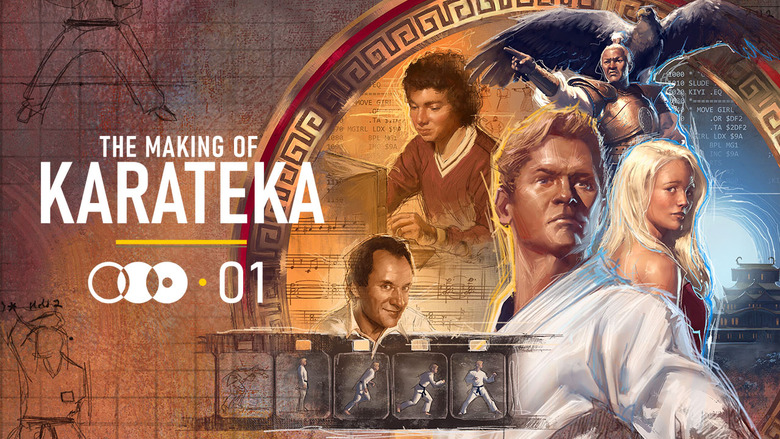Digital Eclipse enjoys out doing themselves. They have been re-releasing classic games for decades, recently released the TMNT: Cowabunga Collection, put together the outstanding Atari 50, and have brought new life to retro games with the Disney’s Afternoon Collection/Classics Collection, to just name a few. Then, they go ahead and release the Making of Karateka, a delightful, detailed history lesson with a wealth of playable surprises, a first for their newly implemented Gold Master Series.
For younger gamers who might not know, Karateka, the precursor to Prince of Persia, was a 1980s computer game created by a teenager named Jordan Mechner. At the time, it stood out for its story, amazingly fluid animation, and soundtrack – all gameplay features we take for granted today. Personally, I remember being very young, maybe 4 or 5 years old when I first saw Karateka on my Uncle’s computer a few years after it originally released. At the time, I didn’t understand what I was seeing but carry this general memory with me to this day. In short, it was a big deal.
The Making of Karateka encapsulates this historic game by guiding the player through five detailed timelines outfitted with videos with Jordan himself, interviews with other game industry vets, scans of letters, pictures from the era, playable prototypes, and more. Remember those multimedia discs from the early 2000s? Where you would put them into your computer and have access to videos and pictures by clicking on buttons (basically what websites do nowadays)? Well this Making of Karateka is basically that but more. It is an interactive timeline and encyclopedia built solely around this important game.
This well designed and thoughtful package is essentially divided into five timelines. Each point on the instant loading timeline provides a fact, a video, a picture, a scan, animation sliders, a quote, or some other piece of data. Just select that point to be taken to view more. The main menu also keeps track of the percentage cleared of each timeline so you know if there is content you might have missed. In other words, it is an easy-to-use interface, one that makes sense and tells the story of how Karateka was developed – before, during, and after.
But make no mistake. This isn’t just a passive, non-interactive timeline reader. Included are multiple ports of Karateka and playable prototypes. For example, Jordan originally started coding a game called Deathbounce. Not only is this early game playable, demo builds are included and outfitted with modern quality of life features such as save states and rewind. Better yet, there is a “watch” mode so you can watch the game play itself but then take over right from that spot with the push of a button. And if that wasn’t enough, Digital Eclipse went so far as to make a modern version of Deathbounce called Deathbounce Rebounded, playable here, complete with Achievements and a new control scheme.
Besides playable versions of Deathbounce, the Apple II, C64, Atari 8-bit, and the Reimagined versions of Karateka are included. What is the Reimagined version? Digital Eclipse essentially took the cut content from Jordan’s original design and added them into a new, modern version of the game (that tiger/panther that guards the gate provides quite the challenge, for example). Besides learning about these games and their early builds, players can play for themselves. The playable games are also instantly available at the main menu so there isn’t a need to scroll through the timelines to play them. Sadly, the 2012 Liquid Entertainment remake of Karateka is not included but it is mentioned in the timeline. Oh yeah, and no matter the version, Karateka remains a difficult game.
This playable encyclopedia was only made possible because Jordan had the foresight to document all these milestones as they were happening. He saved letters he got from publishers. He preserved his notes. He kept his diary. He even kept track of sales data by making his own chart using graph paper, also well persevered. Developers rarely document and save game development history today, in comparison. But college student and teenager Jordan Mechner did something special, which is all captured here in this playable documentary. Digital Eclipse just did a good job bundling it all together into a cohesive way.
The Making of Karateka is something special, something different. Not only did it provide me with insightful detail that has never been told before, but it also opened my eyes to what game documentation and game preservation can and should be. This is a package that was made with care and makes me excited for what the future holds for Digital Eclipse’s Gold Master Series.
SCORE: 9/10
Don’t Forget About: the optional commentary track in the Reimagined version
Better Than: any bonus content found on any DVD/Blu-Ray
Wait For It: the next edition of this Gold Master Series
By: Zachary Gasiorowski, Editor in Chief myGamer.com
Twitter: @ZackGaz
Please consider supporting me on Patreon.


0